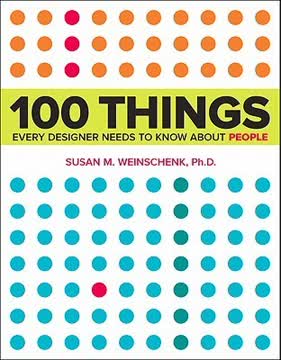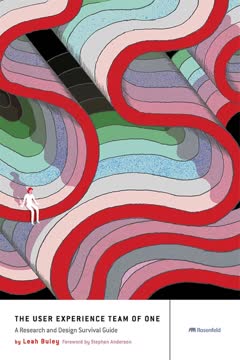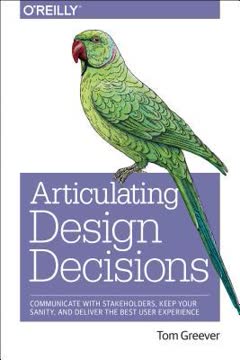Key Takeaways
1. Lean UX: Merging Design Thinking, Agile, and Lean Startup
"Lean UX is the practice of bringing the true nature of a product to light faster, in a collaborative, cross-functional way that reduces the emphasis on thorough documentation while increasing the focus on building a shared understanding of the actual product experience being designed."
Foundation of Lean UX. This approach combines three key methodologies:
- Design Thinking: A solution-focused approach to problem-solving
- Agile Development: Iterative software development focusing on value delivery
- Lean Startup: Using rapid experimentation to validate business ideas
Core principles:
- Emphasize outcomes over outputs
- Promote cross-functional collaboration
- Embrace rapid experimentation and learning
- Focus on solving real user problems
- Minimize waste in the design process
By integrating these methodologies, Lean UX aims to create better products faster, with less waste and more team alignment.
2. From Deliverables to Outcomes: Shifting Focus in UX Design
"Lean UX refocuses the design process away from the documents the team is creating to the outcomes the team is achieving."
Outcome-driven design. Lean UX shifts the focus from creating extensive documentation to achieving specific business outcomes. This approach:
- Prioritizes solving real user problems over feature completion
- Measures success through tangible results rather than deliverables
- Encourages teams to experiment and learn quickly
Hypothesis-driven approach:
- Start with assumptions about user needs and business goals
- Create testable hypotheses based on these assumptions
- Design experiments to validate or invalidate hypotheses
- Use learnings to iterate and improve the product
This shift allows teams to be more flexible, responsive to user needs, and focused on creating real value for both users and the business.
3. Cross-Functional Collaboration: Breaking Down Silos
"Lean UX makes heavy use of the notion of MVP. MVPs help test our assumptions—will this tactic achieve the desired outcome?—while minimizing the work we put into unproven ideas."
Collaborative teams. Lean UX promotes cross-functional collaboration by:
- Bringing together designers, developers, product managers, and other stakeholders
- Encouraging shared ownership of the product vision and design decisions
- Fostering a culture of open communication and idea-sharing
Benefits of cross-functional collaboration:
- Diverse perspectives lead to more innovative solutions
- Reduced handoffs and miscommunication between team members
- Faster decision-making and problem-solving
- Increased team alignment and shared understanding of project goals
By breaking down silos between disciplines, teams can work more efficiently and create better products that address both user needs and business goals.
4. Continuous Discovery: Rapid Experimentation and Learning
"Lean UX is deeply collaborative and cross-functional, because we no longer have the luxury of working in isolation from the rest of the product team."
Iterative learning process. Continuous discovery involves:
- Regularly engaging with users to understand their needs and behaviors
- Quickly testing ideas and gathering feedback
- Adapting designs based on new insights and learnings
Key practices:
- Regular user research sessions (e.g., "3 users every Thursday")
- Rapid prototyping and testing of ideas
- Frequent team discussions to share insights and plan next steps
- Maintaining a backlog of hypotheses to test
This approach allows teams to stay closely connected to user needs and market realities, reducing the risk of building products that don't meet user expectations or business goals.
5. Minimum Viable Products (MVPs): Testing Ideas Quickly
"The MVP is the smallest thing you can make to learn whether your hypothesis is valid."
Efficient idea validation. MVPs are used to:
- Test core assumptions about user needs and product value
- Gather real-world feedback with minimal investment
- Iterate quickly based on user responses
Types of MVPs:
- Prototypes (low to high fidelity)
- Landing pages
- Concierge services
- Wizard of Oz experiments
- Feature flags in existing products
The key is to create just enough of a product or feature to test its viability, allowing teams to learn and adapt quickly without overinvesting in unproven ideas.
6. Collaborative Design: Engaging the Entire Team
"Design Studio is a popular way to do this. Design Studio (sometimes called Design Charrette) is a way to bring a cross-functional team together to visualize potential solutions to a design problem."
Team-based design process. Collaborative design techniques like Design Studio:
- Engage all team members in the creative process
- Generate diverse ideas and perspectives
- Build shared understanding of design challenges and solutions
Design Studio process:
- Problem definition and constraints
- Individual idea generation
- Presentation and critique
- Iteration and refinement
- Team idea generation
By involving the entire team in design activities, Lean UX fosters creativity, alignment, and ownership of the final product across disciplines.
7. Integrating Lean UX with Agile Development
"Lean UX makes us ask hard questions about how we value design."
Harmonizing design and development. To integrate Lean UX with Agile:
- Align UX activities with sprint cycles
- Involve designers in sprint planning and daily standups
- Use design sprints to generate and test ideas ahead of development
Key practices:
- Collaborative sprint planning
- Continuous user research aligned with sprint cadence
- Rapid prototyping and testing within sprints
- Regular design reviews with the entire team
This integration ensures that design and development work in tandem, reducing handoffs and increasing the speed of iteration and learning.
8. User Feedback: Continuous and Collaborative Research
"Lean UX research is continuous; this means that you build research activities into every sprint."
Ongoing user insights. Continuous and collaborative research involves:
- Regular user testing sessions (e.g., weekly)
- Involving the entire team in research activities
- Rapidly incorporating learnings into the design process
Research techniques:
- Usability testing
- User interviews
- Surveys and questionnaires
- Analytics and A/B testing
- Contextual inquiry
By making research a team-wide, ongoing activity, Lean UX ensures that user needs and feedback are constantly informing product decisions.
9. Organizational Shifts: Embracing Lean UX Principles
"Lean UX is, at its core, a mindset."
Cultural transformation. Implementing Lean UX often requires organizational changes:
- Shifting from output-based to outcome-based success metrics
- Encouraging cross-functional collaboration and skill-sharing
- Creating small, dedicated teams with diverse skills
- Embracing a culture of experimentation and learning from failure
Key organizational shifts:
- Valuing problem-solving over deliverables
- Creating open, collaborative workspaces
- Empowering teams to make decisions
- Focusing on continuous improvement and learning
These changes support the Lean UX approach by creating an environment that fosters innovation, collaboration, and user-centered design.
10. Style Guides and Pattern Libraries: Streamlining Design
"Style guides create efficiency. They provide a repository of ready-to-go, approved interface components that can be assembled and aligned to form a workflow."
Consistent design system. Style guides and pattern libraries:
- Ensure consistency across products and features
- Speed up the design and development process
- Facilitate communication between designers and developers
Key components:
- Visual design elements (colors, typography, icons)
- UI components and patterns
- Interaction guidelines
- Content and copywriting standards
By maintaining a living design system, teams can focus on solving unique design challenges rather than reinventing common UI elements, leading to faster iteration and more cohesive user experiences.
Last updated:
FAQ
What's "Lean UX: Applying Lean Principles to Improve User Experience" about?
- Core Concept: "Lean UX" by Jeff Gothelf, edited by Josh Seiden, focuses on integrating Lean Startup principles with user experience design to create more efficient and effective product development processes.
- Methodology: It emphasizes collaboration, rapid iteration, and continuous learning to improve user experience and product outcomes.
- Target Audience: The book is aimed at UX designers, product managers, developers, and managers who want to enhance their team's design and development processes.
- Practical Approach: It provides actionable advice, case studies, and techniques to implement Lean UX in various organizational settings.
Why should I read "Lean UX: Applying Lean Principles to Improve User Experience"?
- Modern Relevance: The book addresses the challenges of integrating UX design with Agile and Lean methodologies, which are prevalent in today's fast-paced development environments.
- Improved Collaboration: It offers strategies to break down silos and foster cross-functional teamwork, leading to better product outcomes.
- Efficiency and Innovation: By focusing on outcomes rather than outputs, the book helps teams innovate more effectively and reduce waste.
- Real-World Examples: It includes case studies and examples from companies like GE and Meetup, providing practical insights into successful Lean UX implementation.
What are the key takeaways of "Lean UX: Applying Lean Principles to Improve User Experience"?
- Cross-Functional Teams: Emphasizes the importance of diverse teams working together from the start to create better products.
- Outcome Focus: Encourages measuring success by outcomes rather than deliverables, aligning team efforts with business goals.
- Continuous Learning: Advocates for regular user feedback and iterative design to quickly validate assumptions and improve products.
- Collaboration Over Documentation: Suggests reducing reliance on heavy documentation in favor of building shared understanding through collaboration.
How does "Lean UX" integrate with Agile methodologies?
- Scrum Integration: The book provides guidance on fitting Lean UX into Scrum processes, using meetings and sprints to enhance collaboration.
- Staggered Sprints: Initially suggests staggered sprints for design and development but ultimately advocates for concurrent work to maximize team cohesion.
- Participation: Stresses the importance of full team participation in Agile rituals to ensure shared understanding and effective prioritization.
- Iterative Process: Aligns with Agile's iterative nature, using rapid prototyping and testing to refine products continuously.
What is the role of hypothesis statements in "Lean UX"?
- Foundation for Testing: Hypothesis statements are used to express assumptions in a testable format, guiding the design and development process.
- Structure: They typically include a belief about the product, the target audience, and the expected outcome, along with criteria for validation.
- Focus on Learning: By framing work as hypotheses, teams can focus on learning from market feedback rather than just delivering features.
- Iterative Refinement: Hypotheses are refined through continuous testing and feedback, allowing teams to pivot or persevere based on evidence.
How does "Lean UX" address the challenge of documentation?
- Conversation Over Documentation: The book advocates for using conversation as the primary means of communication, reducing the need for extensive documentation.
- Shared Understanding: Emphasizes building a shared understanding among team members to minimize reliance on detailed specs and handoffs.
- Lightweight Artifacts: Encourages creating only the necessary design artifacts to move the team's learning forward, avoiding waste.
- Documentation as a Tool: Suggests using documentation to capture decision history and inform future work, rather than as a primary deliverable.
What are some practical techniques from "Lean UX" for collaborative design?
- Design Studio: A collaborative sketching exercise that involves the entire team in generating and refining design ideas.
- Style Guides: Living repositories of design patterns and components that facilitate consistency and efficiency in design and development.
- Prototyping: Using low-fidelity and high-fidelity prototypes to quickly test and iterate on design concepts with users and stakeholders.
- Remote Collaboration: Techniques for working with geographically distributed teams, including using digital tools and setting up virtual design sessions.
How does "Lean UX" suggest handling user feedback and research?
- Continuous Discovery: Incorporates regular user feedback into every iteration, allowing teams to validate hypotheses and adjust designs quickly.
- Collaborative Research: Involves the entire team in research activities to build a shared understanding and reduce the need for handoffs.
- Lightweight Methods: Uses small, informal qualitative research studies to gather insights without disrupting the development process.
- A/B Testing: Employs A/B testing to evaluate different design options and determine which best meets user needs and business goals.
What organizational shifts does "Lean UX" recommend?
- Outcome-Driven Culture: Shifts focus from outputs to outcomes, empowering teams to design solutions that achieve business goals.
- Cross-Functional Collaboration: Encourages breaking down silos and fostering collaboration across disciplines to enhance product development.
- Embracing New Skills: Suggests that designers develop facilitation skills and take on leadership roles in collaborative design processes.
- Small, Agile Teams: Advocates for small, co-located teams that can work efficiently and adapt quickly to new information.
What are some of the best quotes from "Lean UX" and what do they mean?
- "Speed first, aesthetics second": Emphasizes the importance of rapid iteration and learning over perfecting design details early in the process.
- "Get out of the deliverables business": Encourages teams to focus on creating value and achieving outcomes rather than producing extensive documentation.
- "Permission to fail": Highlights the need for a culture that supports experimentation and learning from failure to drive innovation.
- "Shared understanding is the currency of Lean UX": Stresses the importance of building a common understanding among team members to facilitate collaboration and reduce waste.
How does "Lean UX" address the role of designers in a team?
- Facilitators of Collaboration: Designers are encouraged to lead collaborative design sessions and involve the entire team in the creative process.
- Beyond Deliverables: The book suggests that designers focus on solving problems and creating value rather than producing polished artifacts.
- Embracing Iteration: Designers are urged to embrace rapid prototyping and testing to refine ideas based on user feedback.
- Leadership Role: Designers are positioned as leaders who guide the team in building a shared understanding and achieving design goals.
How can "Lean UX" be applied in an agency setting?
- Outcome-Based Contracts: Agencies can experiment with moving away from fixed-scope contracts to focus on achieving client outcomes.
- Increased Collaboration: Encourages breaking down barriers between clients and agencies to foster collaboration and improve project outcomes.
- Flexible Processes: Agencies can adopt Lean UX principles to iterate quickly and respond to client feedback more effectively.
- Client Involvement: Suggests involving clients early and often in the design process to ensure alignment and reduce the risk of rework.
Review Summary
Lean UX receives mixed reviews, with an average rating of 3.99 out of 5. Many readers appreciate its practical advice on integrating UX design with agile methodologies, finding it valuable for beginners and experienced professionals alike. The book is praised for its concise presentation and real-world examples. However, some critics argue that the content is outdated or oversimplified, and a few suggest alternative books for more in-depth information. Overall, readers find it a useful guide for implementing lean UX principles in product development, despite some limitations.
Similar Books










Download PDF
Download EPUB
.epub digital book format is ideal for reading ebooks on phones, tablets, and e-readers.







